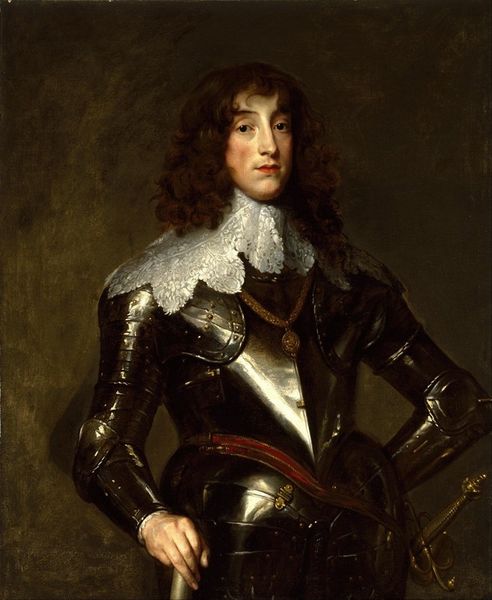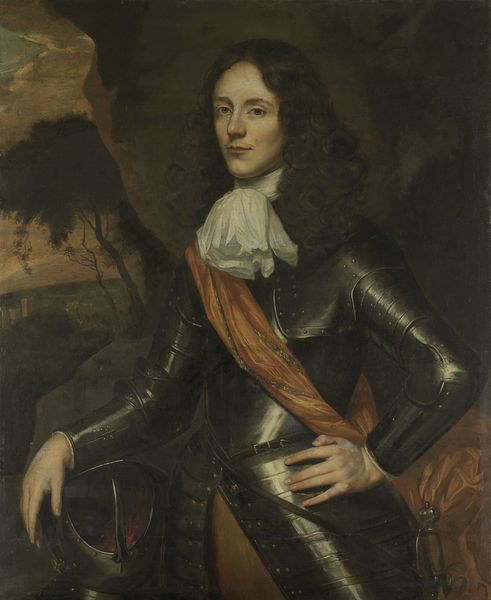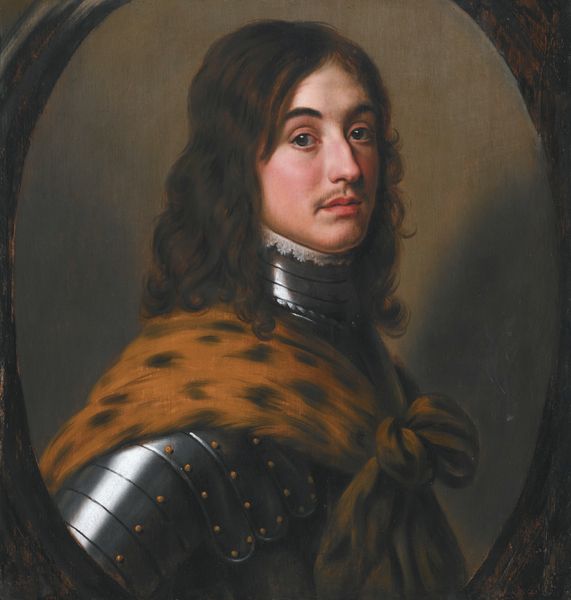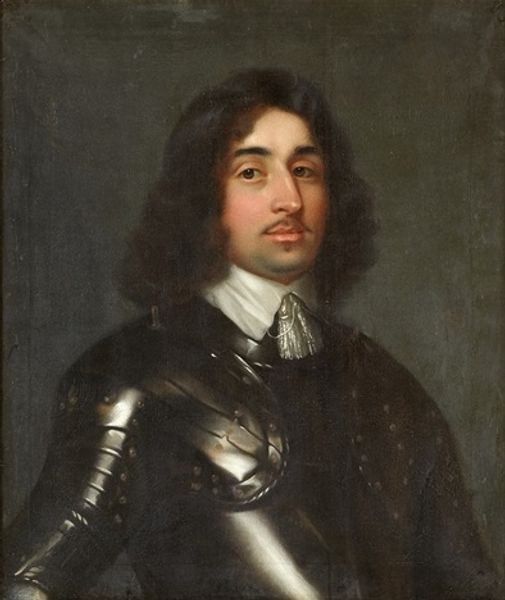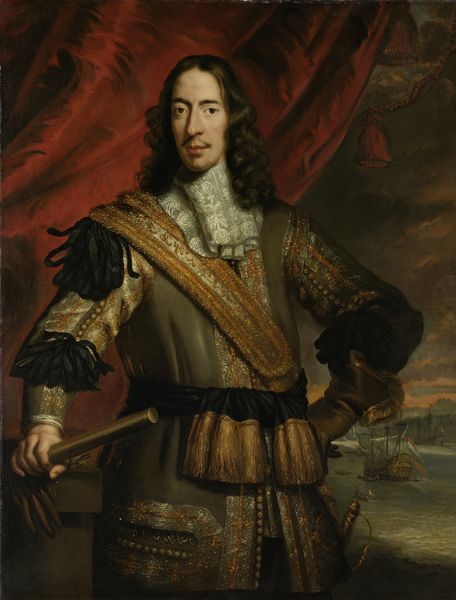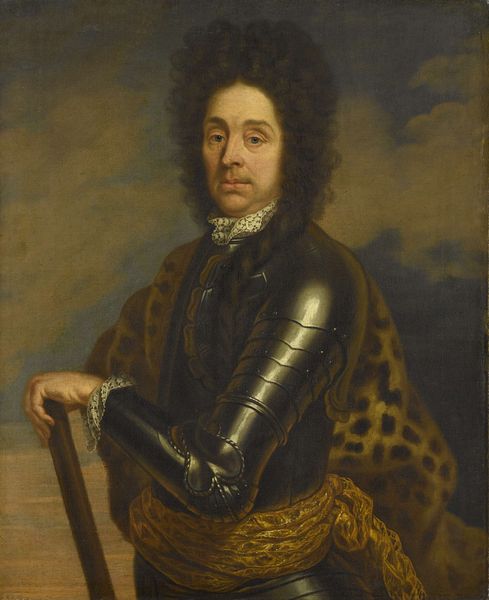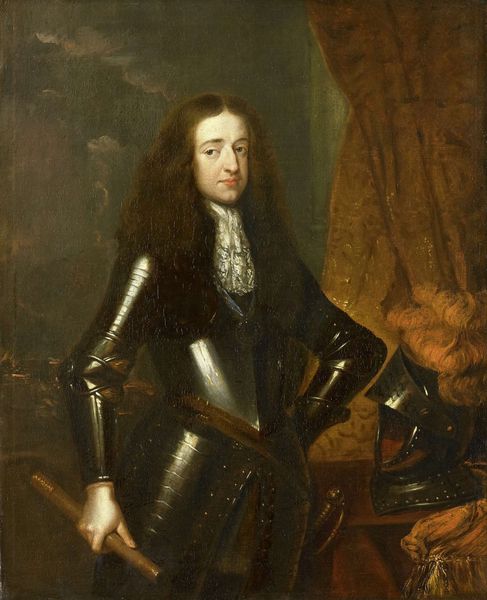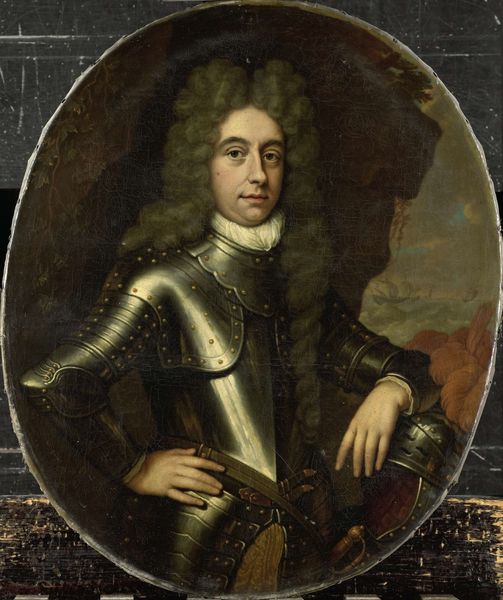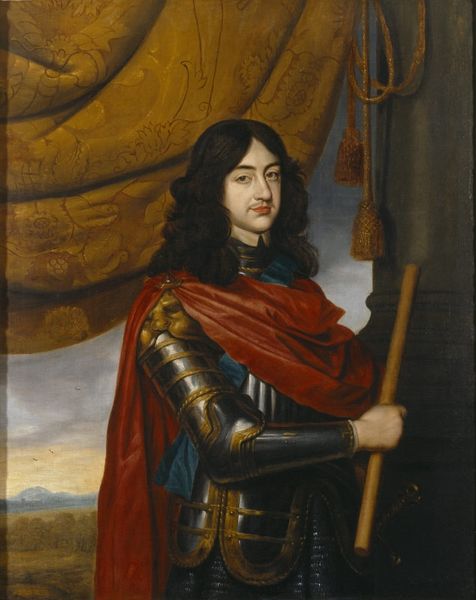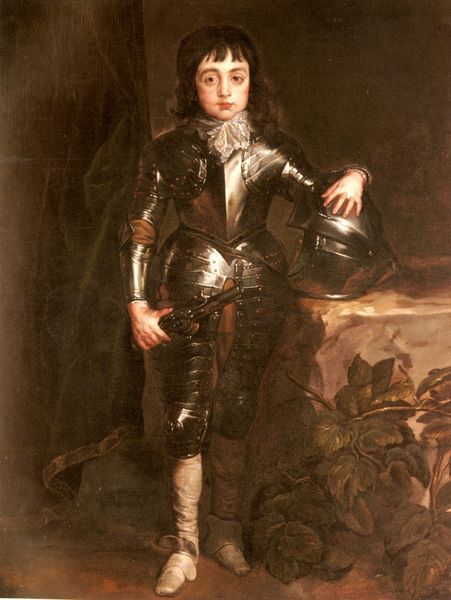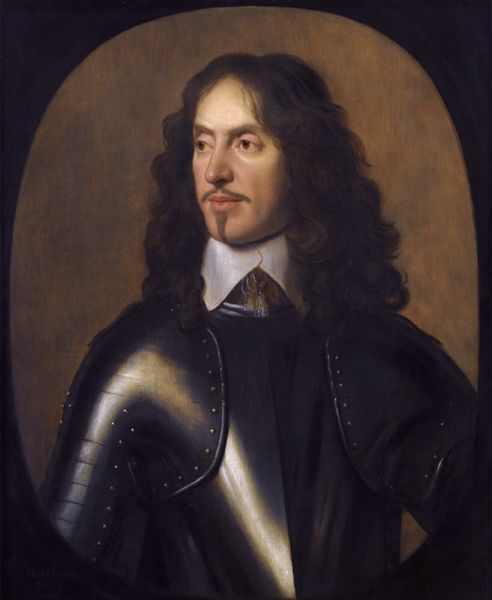
Copyright: Public domain
Editor: So, this is Gerard van Honthorst's "Portrait of William II, Prince of Orange," created in 1651 using oil paint. The prince's rigid pose and the column next to him give off an air of formality. I’m wondering, though, how would you interpret this portrait within its historical context? Curator: That's a keen observation about the formality. Consider that these portraits were potent instruments of power. How do you think the staging of the portrait, with William's armor and prominent sash, might have functioned in the political landscape of the Dutch Republic? Editor: Well, the armor clearly signifies his military role and status, right? But, wouldn’t emphasizing military might also carry a political message about the Prince's aspirations and the role of the House of Orange in the republic at this time? Curator: Precisely. Following the Peace of Münster in 1648, there were internal tensions about the future direction of the Republic and whether to reduce the size of the army. Depicting the Prince in this manner not only emphasizes his power but stakes a claim to continue a strong military leadership. How might this influence the reception of the portrait amongst different audiences, do you think? Editor: Perhaps those who favored a strong military presence would view him as a champion, whereas others, seeking peace and reduced taxes, may see a symbol of potential conflict? It’s not just a likeness; it's a political statement through imagery. Curator: Absolutely! Honthorst has constructed an image that speaks to the social and political complexities of the era. Visual elements aren't neutral, especially in a portrait of a Prince. Editor: I never thought about portraits functioning as active agents in political discourse at the time, I see now it's a painting and political statement at the same time! Thank you! Curator: My pleasure. These types of insights enable us to peel back the layers of history and better understand our contemporary relationship with art.
Comments
No comments
Be the first to comment and join the conversation on the ultimate creative platform.

